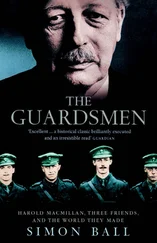The Duke was constantly being compared to Napoleon, but when in 1814 he was asked whether he regretted that he had never fought the Emperor in battle, he replied, ‘No, and I am very glad.’ He despised Napoleon the man, but admired Napoleon the soldier, reckoning the Emperor’s presence on a battlefield was worth 40,000 men. And the Duke of Wellington, unlike Napoleon, had never lost a battle, but facing the Emperor might well mean losing that extraordinary record.
Yet in the summer of 1814 the Duke could be forgiven for thinking that his fighting days were over. He knew he was good at warfare, but, unlike Napoleon, he had never taken delight in battle. War was a regrettable necessity. If it was to be fought then it should be fought efficiently and well, but the object of war was peace. He was a diplomat now, not a general, yet old habits die hard and as his entourage travelled across the Kingdom of the Netherlands the Duke found many places which, as he noted, were ‘good positions for an army’. One of those good positions was a valley which, to most people’s eyes, was merely an unremarkable stretch of farmland. He had always possessed a keen eye for ground, for judging how slopes and valleys, streams and woodland might help or hinder a man commanding troops, and something about that valley south of Brussels caught his attention.
It was a wide valley, its slopes not particularly pronounced. A small roadside tavern called La Belle Alliance, ‘the beautiful friendship’, stood on the ridge marking the valley’s southern side, which was mostly higher than the crest of the northern ridge that rose about 30 metres above the valley floor, say 100 feet, though the slope was never steep. The two ridges were not quite parallel. In some places they were fairly close together, though where the road ran northwards from ridge to ridge the distance between the crests was 1,000 metres, or just over half a mile. It was a half-mile of good farmland, and when the Duke saw the valley in the summer of 1814, he would have seen tall crops of rye growing either side of the road, which was heavily used by wagons carrying coal from the mines around Charleroi to the fireplaces of Brussels.
The Duke saw a lot more than that. The road was one of the main routes from France to Brussels, so if war was to break out again this was a possible invasion route. A French army coming north on the road would cross the southern crest by the tavern and see the wide valley ahead. And they would see the northern ridge. Ridge is really too strong a word; they would have seen the straight road dropping gently into the valley and then rising, just as gently, to the long swell of farmland, the northern ridge. Think of that ridge as a wall, and now give the wall three bastions. To the east was a village of stone houses huddled about a church. If those buildings and the village’s outlying farms were occupied by troops it would be the devil’s own job to get them out. Beyond those stone houses the land became more rugged, the hills steeper and valleys deeper, no place for troops to manoeuvre, so the village stood like a fortress at the eastern end of the ridge. In the centre of the ridge, and standing halfway down the far slope, was a farm called La Haie Sainte. It was a substantial building, made of stone, and its house, barns and yard were surrounded by a high stone wall. La Haie Sainte blocked an attack straight up the road, while off to the west was a great house with a walled garden, the Château Hougoumont. So the northern ridge is an obstacle with three outlying bastions, the village, the farm and the château. Suppose an army came out of France and suppose that army wanted to capture Brussels, then that ridge and those bastions were blocking their advance. The enemy would either have to capture those bastions or else ignore them, but if he ignored them his troops would be squeezed between them as they attacked the northern ridge, vulnerable to crossfire.
The invaders would see the ridge and its bastions, yet just as important was what they could not see. They could not see what lay beyond the crest of the northern ridge. They would have seen treetops in the country beyond, but the ground to the north was hidden, and if that French army decided to attack troops on that northern ridge they would never know what happened on that far hidden slope. Were the defenders moving reinforcements from one flank to the other? Was an attack assembling there? Was cavalry waiting out of sight? The ridge, even though it was low and its slopes were gentle, was deceptive. It offered a defender enormous advantages. Of course an enemy might not be obliging and make a simple frontal assault. He might try to march around the western flank of the ridge where the countryside was flatter, but nevertheless the Duke made a mental note of the place. Why? So far as he knew, indeed so far as all Europe knew, the wars were over. Napoleon was exiled, the diplomats were codifying the peace in Vienna, yet still the Duke made a point of remembering this place where an invading army, marching from France towards Brussels, would find life horribly difficult. It was not the only route an invading army might follow, and not the only defensive position the Duke noted in his two weeks of reconnaissance, but the ridge and its bastions stood athwart one of the possible invasion routes a French army might follow.
The Duke rode on, passing La Haie Sainte, to find a crossroads at the top of the ridge and, just beyond, a small village. If the Duke had asked what the place was called they would have said Mont St Jean, which was mildly amusing because the mountain of Saint John was nothing but that gentle swell in the wide fields of rye, wheat and barley. North of the village the road was swallowed into the great forest of Soignes and a couple of miles up that road there was a small town, another unremarkable place, though it possessed a handsomely domed church and a large number of inns for thirsty and tired travellers. In 1814 fewer than two thousand people lived in the town, though they had lost at least twenty young men to the long wars, all of them fighting for France, because this was the French-speaking area of the province of Belgium.
We do not know whether the Duke stopped in the small town in the summer of 1814. We do know he had taken notice of Mont St Jean, but the nearby country town with its fine church and lavish inns? Did he remember that place?
In time he would never forget it.
It was called Waterloo.
Конец ознакомительного фрагмента.
Текст предоставлен ООО «ЛитРес».
Прочитайте эту книгу целиком, купив полную легальную версию на ЛитРес.
Безопасно оплатить книгу можно банковской картой Visa, MasterCard, Maestro, со счета мобильного телефона, с платежного терминала, в салоне МТС или Связной, через PayPal, WebMoney, Яндекс.Деньги, QIWI Кошелек, бонусными картами или другим удобным Вам способом.












